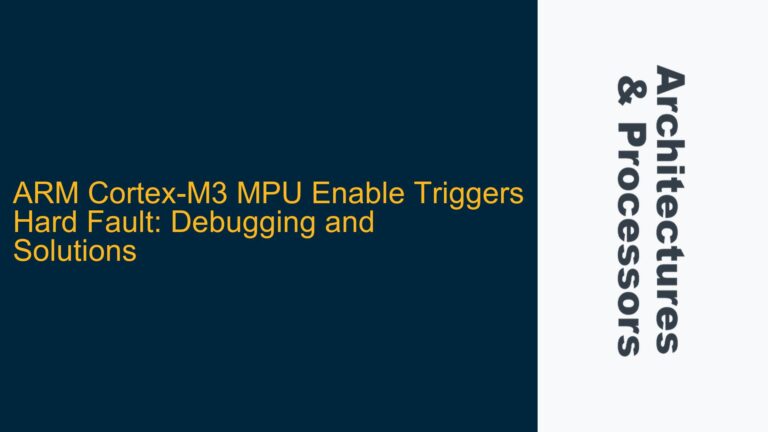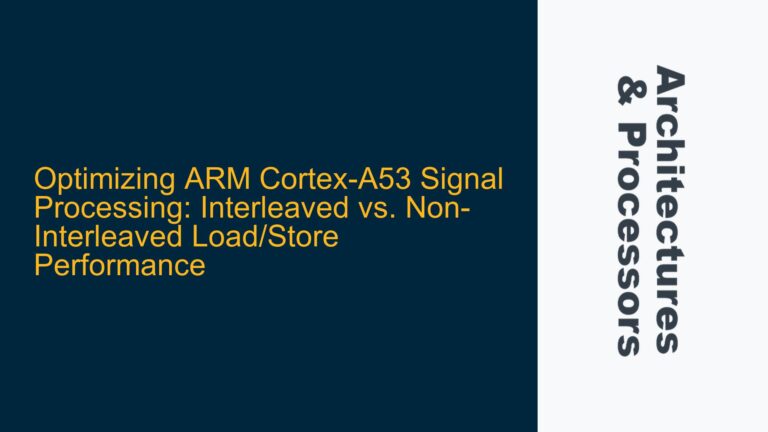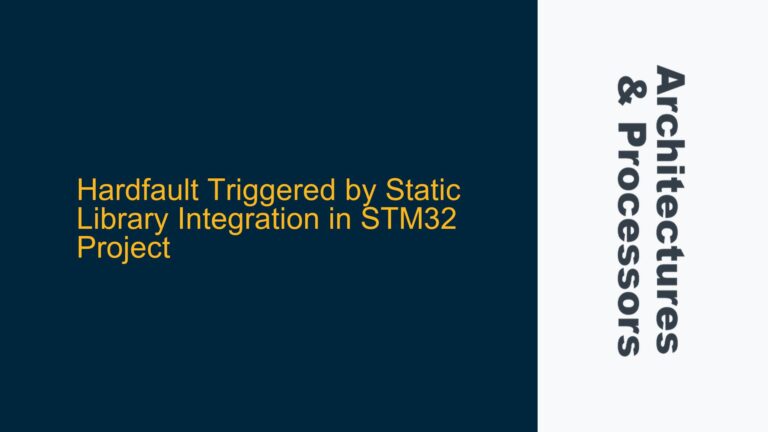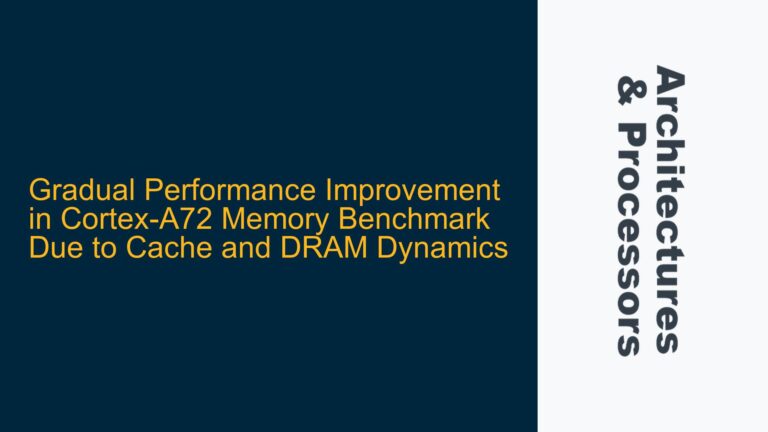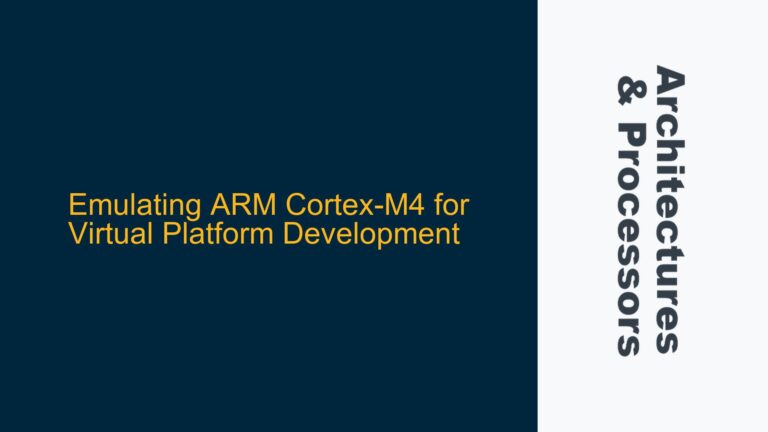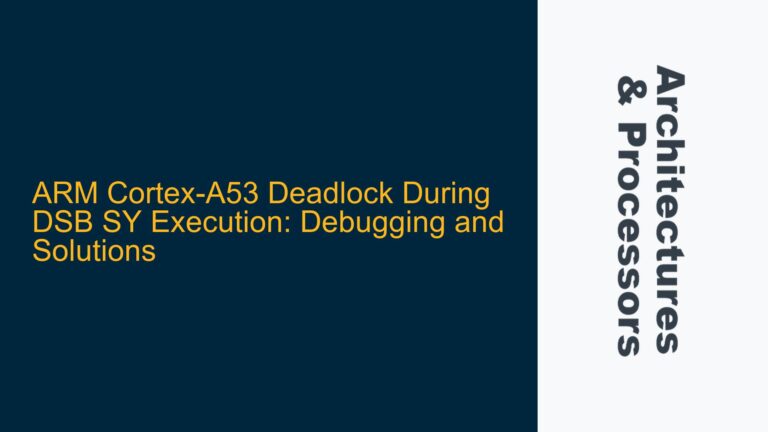Cortex-M0 Interrupt Handler Fails to Return to Reset Handler
The issue at hand involves a Cortex-M0 processor that enters an interrupt handler for a timer but fails to return to the reset handler after completing the interrupt service routine (ISR). The processor executes the timer handler correctly for the first interrupt but then gets stuck, providing addresses such as fffffffc and 00000004 before ceasing to respond. This behavior indicates a critical failure in the processor’s ability to resume normal operation after handling the interrupt. The root cause is likely related to improper stack configuration or memory setup, which is essential for the Cortex-M0’s exception handling mechanism.
The Cortex-M0 processor relies on a well-defined stack and memory layout to manage interrupts and exceptions. When an interrupt occurs, the processor saves the current state (context) onto the stack, executes the ISR, and then restores the context to resume normal operation. If the stack is not properly configured, the processor may fail to save or restore the context correctly, leading to undefined behavior such as getting stuck in the ISR or jumping to invalid addresses.
In this case, the processor’s inability to return to the reset handler suggests that the stack pointer (SP) is either not initialized correctly or points to an invalid memory region. Additionally, the addresses fffffffc and 00000004 are indicative of a corrupted stack or an invalid return address being popped from the stack. This issue is further compounded by the fact that the user is working with a custom System-on-Chip (SoC) design, which introduces additional complexity in ensuring that the memory map and peripheral addresses are correctly defined.
Stack Misconfiguration and Invalid Memory Addressing
The primary cause of the issue is the misconfiguration of the stack and memory layout in the Cortex-M0 system. The Cortex-M0 processor requires a valid stack pointer to be set up before any interrupts are enabled. The stack pointer must point to a valid region of memory, typically in SRAM, where the processor can save and restore context during interrupt handling. If the stack pointer is not initialized or points to an invalid memory region, the processor will fail to handle interrupts correctly.
In the provided code, the stack pointer is not explicitly initialized in the reset handler. The Cortex-M0 processor expects the initial stack pointer value to be defined in the vector table, typically at address 0x00000000. The first entry in the vector table should be the initial value of the stack pointer, followed by the reset vector and other exception handlers. If this initial stack pointer value is not defined or points to an invalid memory region, the processor will not have a valid stack to use during interrupt handling.
Additionally, the user has defined a custom vector table with the following entry:
__Vectors DCD 0x00003FFc ; 1K Internal Memory
This value, 0x00003FFc, is intended to be the initial stack pointer. However, this address is unusual for a Cortex-M0 system and may not correspond to a valid memory region in the custom SoC design. If the memory at this address is not accessible or does not exist, the processor will fail to initialize the stack pointer correctly, leading to the observed behavior.
Another potential cause is the omission of memory barriers or incorrect handling of the interrupt controller. The Cortex-M0 processor uses the Nested Vectored Interrupt Controller (NVIC) to manage interrupts. The NVIC must be properly configured to enable interrupts and set their priorities. In the provided code, the NVIC is configured to enable the timer interrupt, but there is no explicit memory barrier to ensure that the configuration is completed before the interrupt is enabled. This could lead to race conditions or undefined behavior.
Proper Stack Initialization and Memory Barrier Implementation
To resolve the issue, the stack pointer must be properly initialized, and the memory layout must be validated. The following steps outline the necessary corrections and best practices for ensuring reliable interrupt handling on the Cortex-M0 processor.
Step 1: Validate the Memory Map
Ensure that the memory map of the custom SoC design is correctly defined and that the stack pointer points to a valid region of SRAM. The initial stack pointer value should be set to the top of the SRAM region. For example, if the SRAM is 1 KB in size and located at 0x20000000, the initial stack pointer should be set to 0x20000400 (assuming a descending stack).
Step 2: Initialize the Stack Pointer in the Vector Table
The vector table must be defined with the initial stack pointer as the first entry. This can be done in assembly or using a linker script. For example:
__Vectors DCD 0x20000400 ; Initial stack pointer (top of SRAM)
DCD Reset_Handler ; Reset handler
DCD 0 ; NMI handler
DCD 0 ; Hard fault handler
; Other exception handlers...
Step 3: Configure the NVIC with Memory Barriers
When configuring the NVIC, ensure that memory barriers are used to prevent race conditions. The DSB (Data Synchronization Barrier) and ISB (Instruction Synchronization Barrier) instructions should be used after writing to NVIC registers. For example:
LDR R1, =0xE000E100 ; Interrupt Set Enable Register
LDR R0, =0x00000001 ; Enable interrupt for timer
STR R0, [R1]
DSB ; Ensure the write completes
ISB ; Ensure the pipeline is flushed
Step 4: Verify the Timer Handler
Ensure that the timer handler does not modify any registers that are not saved and restored by the processor. The Cortex-M0 processor automatically saves and restores certain registers during interrupt handling, but any additional registers used in the ISR must be manually saved and restored. For example:
Timer_Handler PROC
PUSH {R4, LR} ; Save additional registers
; ISR code...
POP {R4, LR} ; Restore additional registers
BX LR ; Return from interrupt
ENDP
Step 5: Debugging and Validation
Use a debugger to verify that the stack pointer is correctly initialized and that the stack is not corrupted during interrupt handling. Check the contents of the stack before and after the interrupt to ensure that the context is saved and restored correctly. Additionally, verify that the timer interrupt is being cleared correctly in the peripheral to prevent repeated triggering of the ISR.
By following these steps, the issue of the Cortex-M0 processor getting stuck in the interrupt handler can be resolved. Proper stack initialization, memory barrier implementation, and careful validation of the memory map are essential for reliable operation of the Cortex-M0 processor in custom SoC designs.

